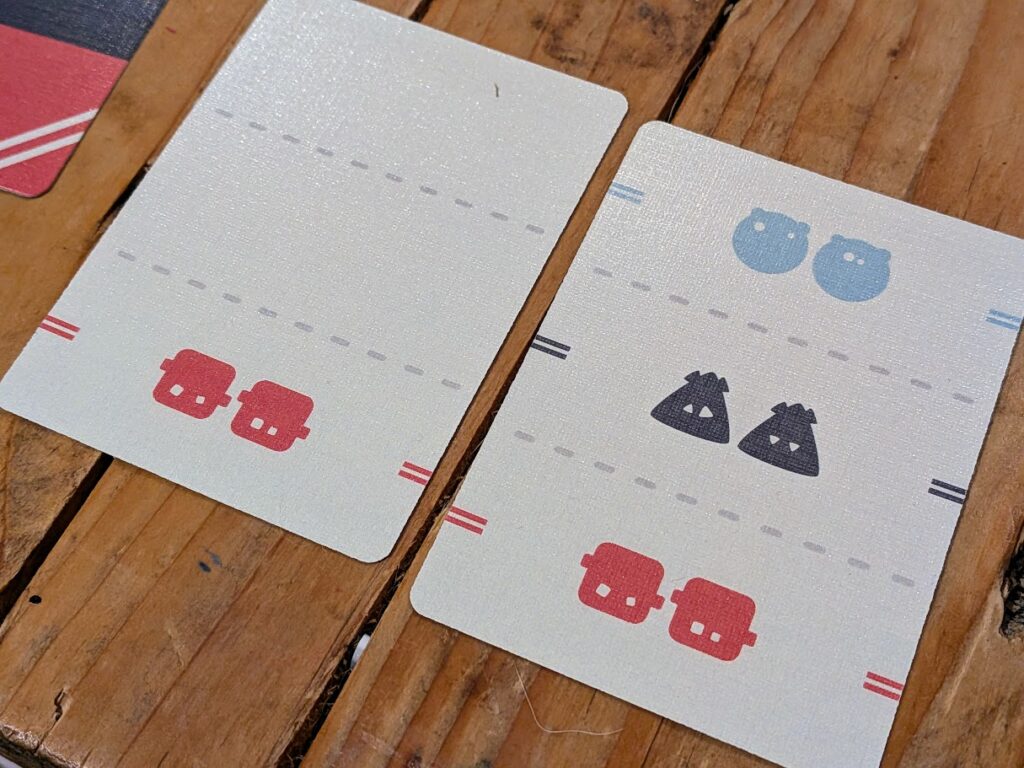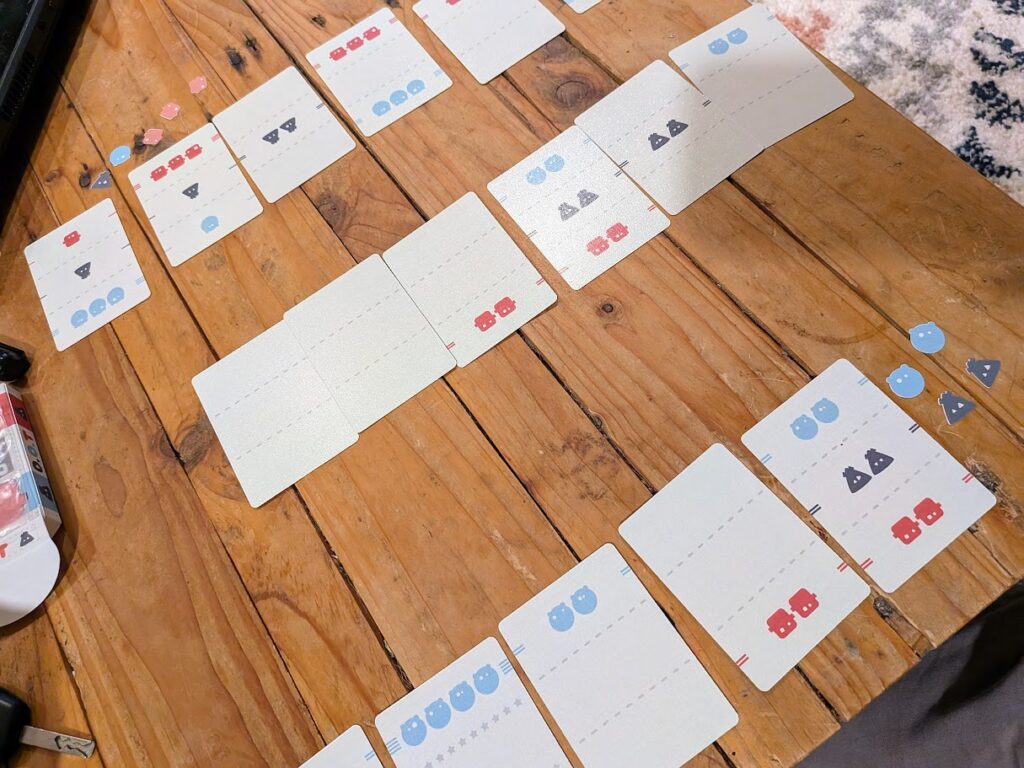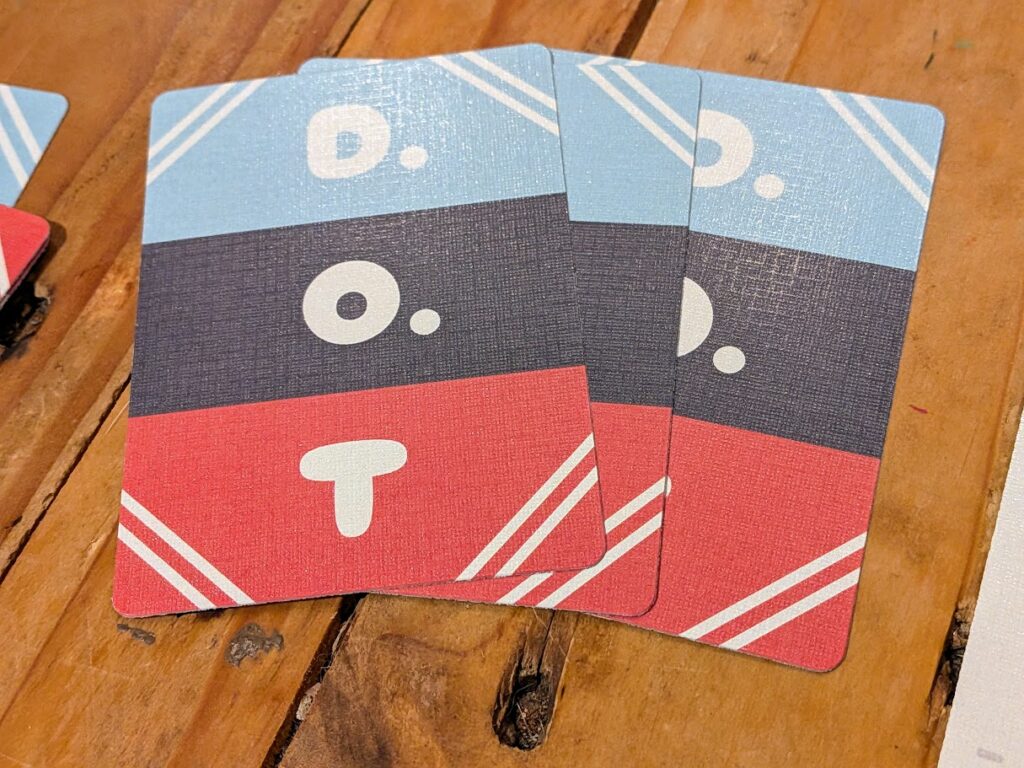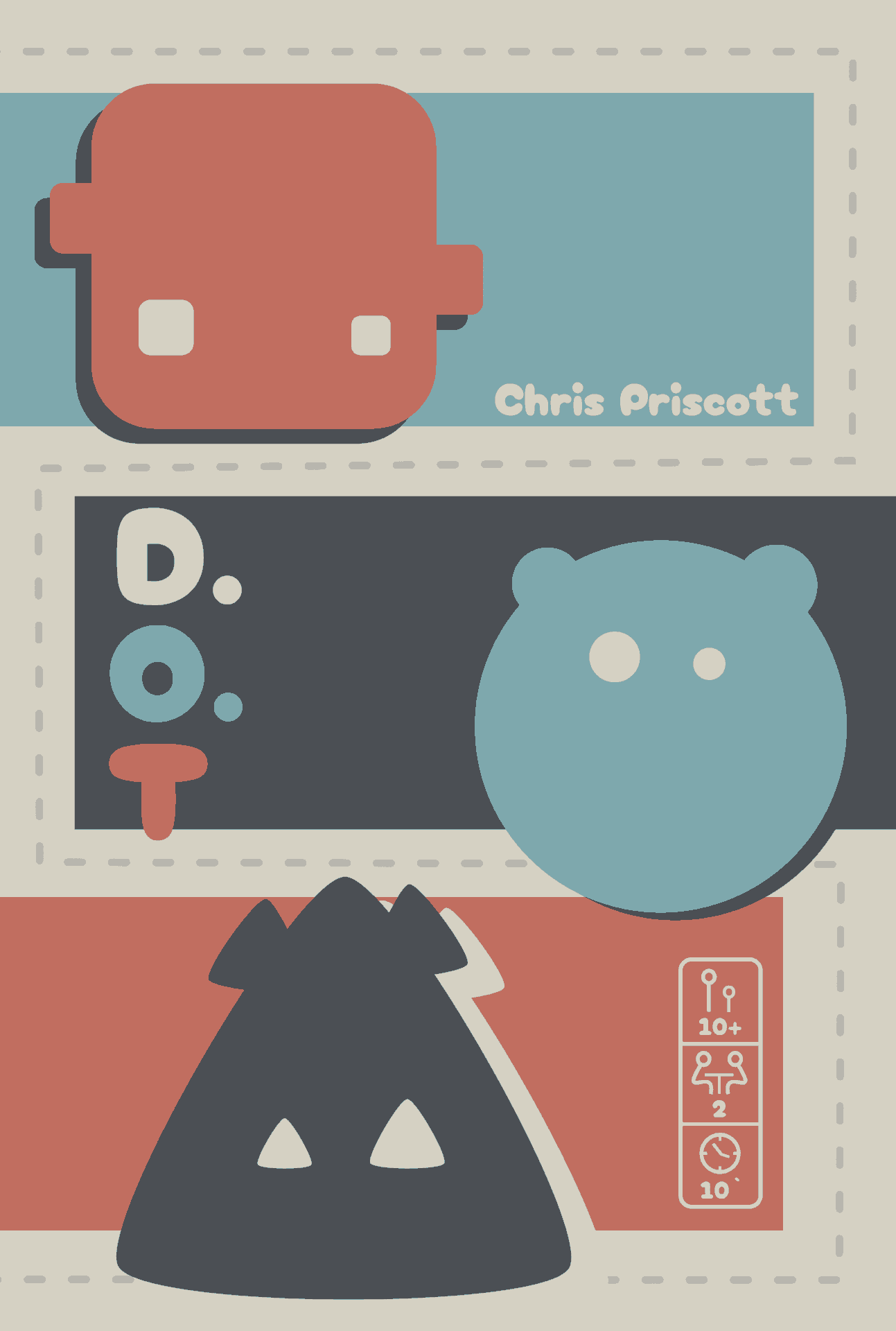A pre-production copy of D.O.T was kindly provided by Unfringed. Thoughts & opinions are my own.
When I was talking to Chris of Unfringed about covering his game Fetching Feathers (read the preview of that one right here), he asked me if I’d like to take a look at another game at the same time – D.O.T – I had no idea what it was, what it was about, or anything else, but in for a penny, in for a pound, so I said yes. I’m really glad I did, because even though Fetching Feathers is excellent, D.O.T is the game I keep thinking about, and the one I keep wanting to go back and play around with a little more.
D.O.T. is a game strictly for two players. A head-to-head duel where each player has an identical deck of cards. Each card has three rows on it, and each row represents one of the game’s suits, for want of a better description. Each of the three rows has a number of dots in its unique colour and shape. From your hand of six cards in each round, you play three cards to a row in front of you, and three into a shared six-card pool between you.

The cards are revealed, and it’s time for some mental mathematics. You count the total number of dots on the top row of the shared card pool to start with, then the total of the same dots on the cards in front of you. If the difference between the two numbers is greater than the difference for the other player, you win a little token – nice!

So you do all of this for each of the three rows and award the tokens to the winners in each case. There are three rounds in the game, each with three tokens on offer, so as the Carol Vordermans among you will have worked out, the first to five wins.
The twist
Yeah, you better believe there’s a twist. You see, the totals of dots we’re talking about here aren’t huge. The differences between what’s in front of you and what’s in the middle of the table aren’t big numbers, so there are times when you end up in a tie. So what happens then? In time-honoured lottery tradition, you have a rollover! The token for that particular suit stays on the table waiting for the winner of the next round to claim both the token for that round and the rolled-over token.
It’s a really nice mechanism for a number of reasons, but the best thing about it is that the game comes down to the third and final round more often than not. It’s theoretically possible to have a winner declared after the second round, if someone were to claim five of the six tokens up for grabs at that point, but it’s very rare. Once you’ve got a game or two under your belt, there’s a nuanced emergent game that pokes its head above the parapet, and it’s at that point where it really comes alive.

At the end of the first and second rounds, the shared pool of cards is discarded, but the cards in front of you stay where they are, and you add to them as the game goes on. Good times, you can just min-max a couple of suits, crush your enemies, see them driven before you, and hear the lamentations of their women, right?
Not quite…
The other twist
Didn’t see that coming, did you? The spicy dash of gaming sriracha in this three-round sandwich of cardplay is the second round’s tokens being awarded for the smallest difference in each of the three suits. This is where things get really tricky. If you dump all the cards with loads of dots in your personal row for the first round, you better hope you have something equally powerful in the second round to try to redress the balance a little.
This is all easier said than done because you’ve got a massive variable at play – the other person. They can see what you’ve got in front of you, and they can see where you’re going to struggle. So as much as you want to play cards that benefit your goals, you’re also trying to poke sticks in the spokes of your opponent’s bike.

On top of all of this, there’s a third twist! After the first and second rounds, you can choose a card (two cards after round two) to discard from the other person’s personal display. Try as you might, things are never going to go exactly the way you want them to, so D.O.T becomes a game of trying to stamp out tiny fires on your side of the table while adding kindling to the embers on the opposite side.
It’s so good!
Final thoughts
I’ve got a lot of time for so-called micro games these days. A game that does it well seems to be able to pack fun and gameplay into a few cards as if it’s a tardis. D.O.T is no exception. There’s some of the familiar Priscott DNA in the game, specifically the three rounds of developing an ever-growing personal tableau, but D.O.T is nothing like Zuuli or Fetching Feathers.
It’s another of those small games where repeated play is rewarded with a better game. Once you know which cards have been played, and you can remember which others are still available, it pulls the covers back from a new layer of strategy. Understanding what’s still out there, waiting to be played, is what you’ll be leaning on as you play it more.
Being transparent, as always, I was sent a pre-production copy of D.O.T to play. If I hadn’t been sent one, and instead I’d played someone else’s copy, I’d be buying myself a copy. I enjoy it that much. It’s quick, small, packs a ton of interaction and mind games in, and the graphic design is just gorgeous. I really, really like D.O.T.
It looks like it’s going to launch at the same time as the Fetching Feathers Kickstarter on 9th October 2026. You can view that campaign right here – https://www.kickstarter.com/projects/unfringed/fetching-feathers. When it does, I believe it’ll cost £10 if you buy Fetching Feathers at the same time, or £12 on its own. Honestly, even if you don’t fancy fetching feathers, but you have a regular opponent, grab yourself a copy of D.O.T. It’s very good.
Enjoying this article? Consider supporting me.

D.O.T (2026)
Design: Chris Priscott
Publisher: Unfringed
Art: Chris Priscott
Players: 2
Playing time: 10 mins


